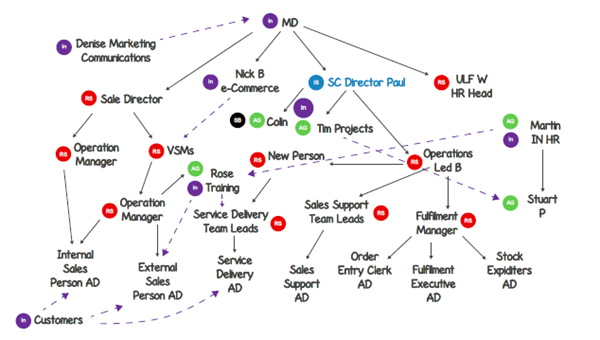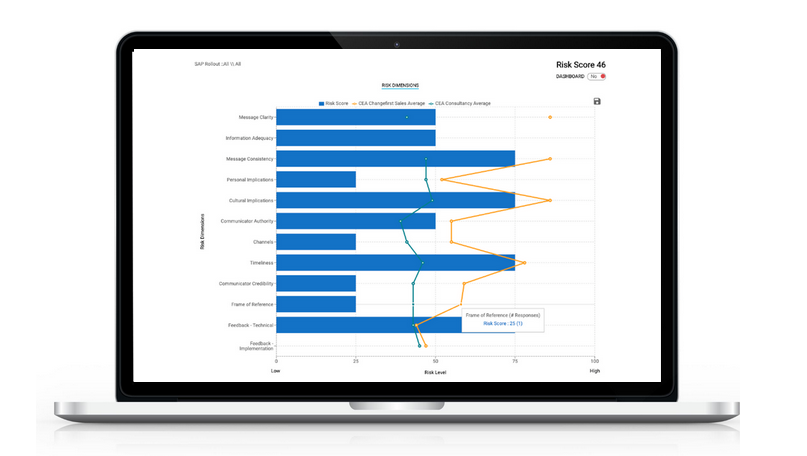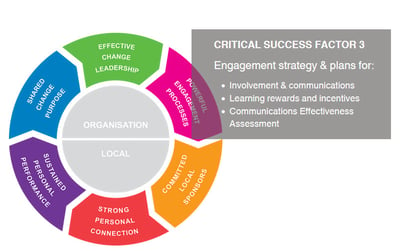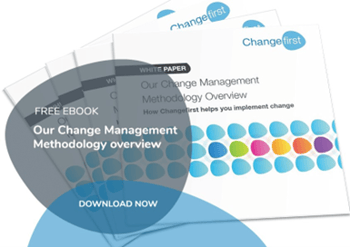
Change Communications are at the heart of Change Communications are at the heart of all Change projects. Yet, many companies forget the needs of employees as they plan their Change Communications strategy.
Here are our 4 tips to help you create effective communications for your Change initiatives.
1. Don’t forget the ‘why’
As Forbes points out, the execution of strategy depends on employees understanding the rationale for Change. So that they can get behind the plan and play their part in execution.
And as a result, your Change Communications strategy needs to start at the base question of why – ‘why things can’t continue as they are’.
A weak ‘why’ can be a powerful barrier to people choosing to engage with your Change efforts. So, you need to be clear on:
- what the goal of the Change is
- how the Change fits with your organisational values and objectives
- the personal implications of the Change and your specific plans for supporting people during it
You also need to ensure your communications around the Change:.png?width=327&height=305&name=4%20qualities%20of%20a%20successful%20change%20communications%20strategy%20(1).png)
- are clear and consistent in the way they answer the questions above
- make a sufficient, and balanced, level of information available across all relevant channels. To help build understanding and energy to participate in the Change
- ensure that everyone involved in Change Communications e.g. leaders, People & OD Practitioners and the Communications team (internal or marketing) are aligned and delivering consistent messages
2. Be clear on who will deliver the message
To be effective your Change Communications need to be delivered by the right people and in a structured, consistent way by leaders and influencers in your Change Network.
At Changefirst we use a process called Change Network mapping (often referred to as Stakeholder mapping) which enables you to understand and assess the true power, influence and relationships that you need to harness for effective Change Communications.

Source: PCI Methodology, Change Network Mapping
This process enables you to:
- Identify where Change Communications will have the greatest impact
- determine who is most credible to communicate with impacted groups
- agree who needs to be prepared and supported to deliver on your Change Communications plan
To be successful, your leaders are going to need to be clear on what type of messages need to be repeated and reinforced. And they must be available to employees to provide transparency, guidance and support.
3. Consider your audience's needs in the process
Your Change audience may well look the same as they did 12 months ago - or even 5 years ago - but the way they consume information will almost certainly have changed.
Quite simply, they decide how they receive information and, just as importantly, who they receive it from. What you need to do as you create your plan is:
- Listen. In the words of Chris Brogan: "Grow bigger ears"
- And, if you don't know where to start, ask your audience. Communication is a personal thing. Typically face to face communication is the preferred option - when major Change is involved - but a mix of media types from email to video content can also amplify and reinforce your message effectively
To be effective your audience will expect communication: .png?width=315&height=297&name=4%20qualities%20of%20a%20successful%20change%20communications%20strategy%20(2).png)
- that is timely and consistent. The right message to the right people at the right time
- where what is coming from the top is consistent with messages from line and middle managers
- is tailored to their business context and cultural reality
- is a two-way process. Remember, the ratio of ears to mouth is 2:1. Use them in this order
4. Make sure you have data to measure engagement
The real test of your Change Communications is the extent to which employees engage with them and their success can make or break a Change Management project. And how do you know if you’re getting it right, if you don’t check along the way?
Which is why we take a data-driven approach and over 40% of practitioners in our client organisations use our Communication Assessment tool to gain feedback from impacted groups to guide their next steps.

The Communications Effectiveness Assessment (CEA) identifies how effective Change Communications are in any given Change Management project. Consisting of 12 questions, the tool asks respondents to provide an answer based on their own experiences, knowledge and feelings..png?width=333&height=312&name=4%20qualities%20of%20a%20successful%20change%20communications%20strategy%20(3).png)
Used early, and at regular intervals, it can help you collect the data needed to refine and tailor your messaging. And, also, to coach sponsors to overcome potential resistance and mitigate people risks. As well as make future communication planning simpler.
|
PCI® can help your deliver effective Change Communications Delivering effective organisational Change Communications can be challenging. Our PCI® Change Management methodology offers:

All as part of a wider approach to foster engagement that includes involvement, rewards and recognition. Plus structured learning about Change. Learn more here. |



Leave a comment